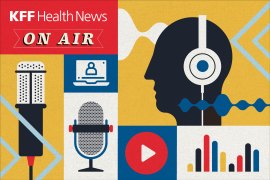Viewpoints: FDA Firings Cause Concern Over Food Safety Inspections; GLP-1 Drugs Need To Be More Accessible
Opinion writers break down these public health issues.
The New York Times:
The Return Of The Great American Stomachache
With the passage of the Food and Drugs Act and the Meat Inspection Act, the United States created the framework for a federal system to test ingredients, inspect food factories and recall unsafe products. This system has been criticized as seriously underfunded and often overcautious. (Deborah Blum, 4/9)
The New York Times:
John Fetterman: GLP-1 Drugs Saved My Health. More Americans Need Access.
The Trump administration recently nixed a rule proposed by President Joe Biden that would have made it easier for 7.4 million Americans to afford antiobesity medications called GLP-1s. This was a mistake. These drugs, like Ozempic and Wegovy, can be a game changer. I know firsthand. (U.S. Sen. John Fetterman (D-Pa.), 4/8)
The Boston Globe:
Cancelling Research Is Not The Answer To Antisemitism
On March 7, the Trump administration announced that $400 million in federal grants and contracts to Columbia University would be canceled, due to “continued inaction in the face of persistent harassment of Jewish students.” The following week was life-changing for researchers across the university. The cuts were sweeping and chaotic — going beyond the administration’s usual targets like diversity, equity, and inclusion programs to include research on everything from vaccines to COVID treatments to autism. (Andrew Geneslaw, 4/9)
Stat:
The Increasing Threats To Local Public Health Efforts
While the upheaval at the Department of Health and Human Services is getting more headlines, local public health organizations are also facing a moment of reckoning. Major cuts are leaving public health departments with fewer resources and employees. (Torie Bosch, 4/9)
Stat:
AI Scribe Technology Lets Me Focus On My Patients, Not A Screen
The advent of electronic health records dramatically improved workflow. Suddenly, what once took multiple steps could be completed with a few clicks. But, as providers, our eyes became glued to the screens that aided us. We juggled typing orders and medical notes while speaking to patients. Physically, we turned our backs to our patients and our faces to the glowing digital workflows in front of us. (Iyesatta Massaquoi Emeli, 4/9)






